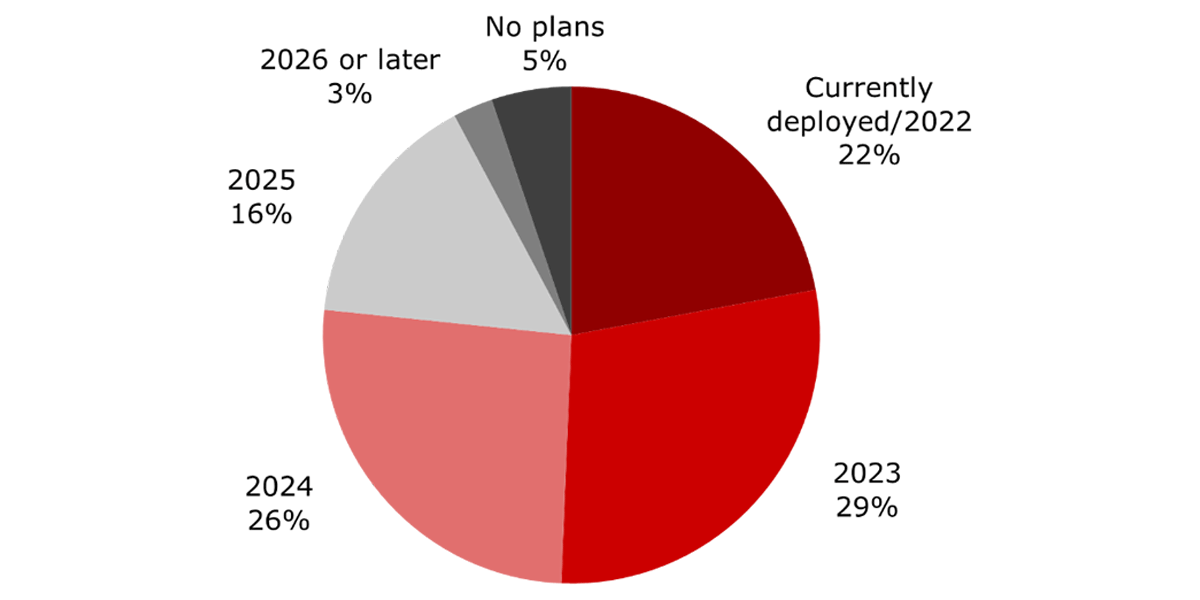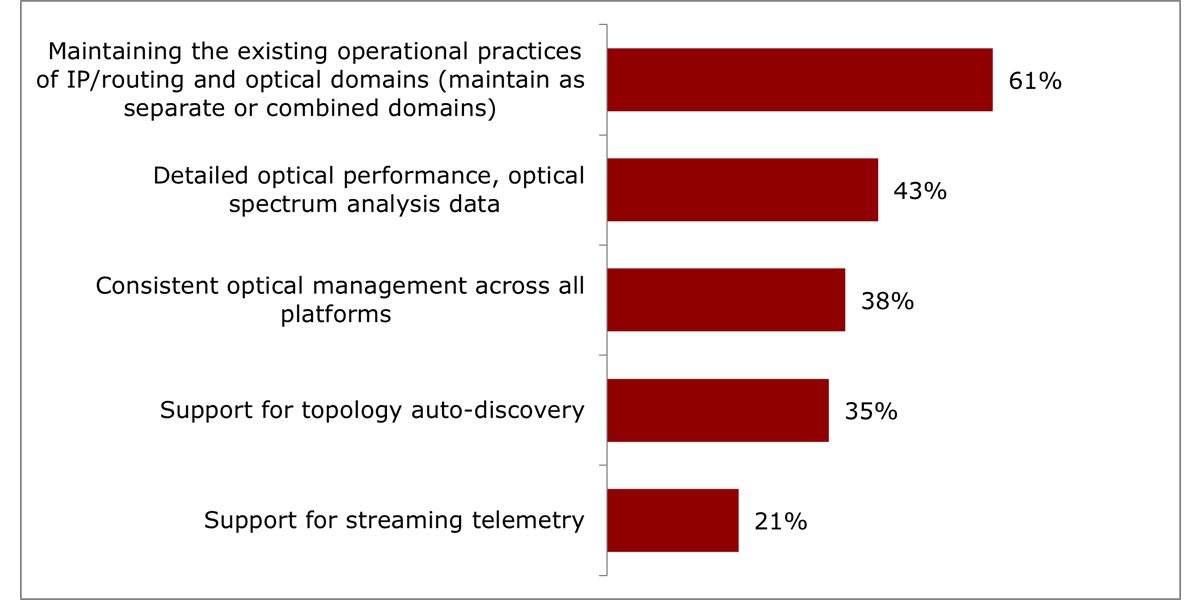“An open line system disaggregates the entire optical line from terminals and optical transponders, allowing network operators to choose transponder suppliers independently of the line,” explains Sterling Perrin Principal Analyst, Optical Networking & Transport at Heavy Reading Profile. “Our research indicates that just over one-fifth of operators intend to have disaggregated, multi-vendor optical line systems in place by the end of 2022. An additional 29% plan such deployments in 2023. Although these timeline may be on the optimistic and ambitious side, the results indicate a clear intent and direction toward truly disaggregated open optical lines.”
Heavy Reading on the central role of openness and automation

Several trends currently driving transport networks will have a major impact on architectures over the next five years and beyond. These megatrends all have one thing in common: the central role of openness and automation.
“Operators are interested in open transport networks for a lot of reasons,” explains Sterling Perrin Sr. Principal Analyst, Heavy Reading. “Top reasons commonly cited are faster time to market, faster access to new innovations, increasing supplier diversity or avoiding vendor lock-in, and cost reductions. Different operators will focus on different benefits. The current supply chain crisis has really elevated the importance of supply chain diversity, and open optical networks can address some of that.”

Sterling Perrin
Sr. Principal Analyst, Heavy Reading

Network operators expect to see multiple benefits of (predictive) Machine Learning (ML) as they build open optical networks for the future. “Our research indicates that there are great expectations in the area of network design and service planning as well as predictive network health,” says Sterling. “Optical specialists who focus specifically on optical networks are primarily interested in predictive traffic growth. Predictive modelling for greener networks is not a high priority for both the global group and the optical specialists.”
Heavy Reading’s survey also looked at the integration of coherent pluggable optics on IP routers (i.e., IP over DWDM). This is one of the hottest topics in optical networking this year. “Despite the hype and excitement, the industry has significant challenges to overcome across technology, management and operations,” explains Sterling”. “For managing coherent pluggable optics in routers, the top challenge identified by service provider respondents, by far, is maintaining the existing operational practices of IP/routing domains and optical domains. This challenge was cited by 61% of the survey group.”
“We know there was interest in automating transport networks, which is why we launched the survey,” adds Sterling. “However, the level of interest was a surprise. Among respondents, 93% reported that automation is at least “important” for their next-generation transport network strategies, and 39% reported that automation is “critical” and a “primary pillar of the network.”
“Automation, open optical networking, and coherent pluggable optics are three major trends driving optical networking right now. And they are all tightly interlinked with each benefitting, as well as benefitting from, the others. So we will see them all move forward together. It might not be in lock step, but they will be very closely aligned. The new coherent IP over DWDM architecture is a great example. IP over DWDM really needs automation, openness, and pluggable optics to all come together.”

About Heavy Reading
Heavy Reading, the research division of Light Reading, offers deep analysis of emerging telecom trends to network operators, technology suppliers and investors. Its product portfolio includes in-depth reports that address critical next-generation technology and service issues, market trackers that focus on the telecom industry's most critical technology sectors, exclusive worldwide surveys of network operator decision-makers that identify future purchasing and deployment plans, and a rich array of custom and consulting services that give clients the market intelligence needed to compete successfully in the global telecom industry.




